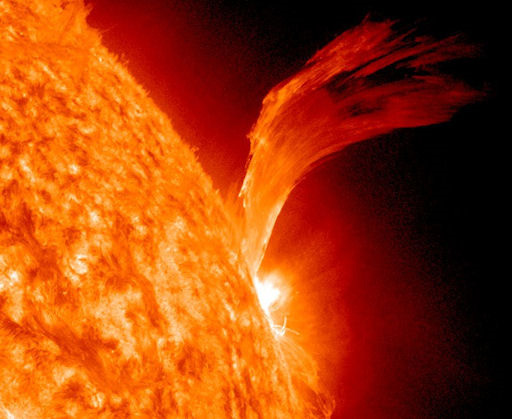
While the night of September 1, 1856 sent shock waves among telegraphers after telegraph systems went haywire across the world a few hours after English astronomer Richard Carrington recorded the ‘first and largest’ solar flare to have struck the planet, it led to a series of researches attempting to study and predict these solar storms.
Astrophysicists the world over believe that the magnetic field in the Sun organise as uni formly twisted cylindrical tubes of magnetic energy that well up to the visible surface of the star as sunspots before ejecting flares.
But a team from Indian Institute of Astrophysics and University of Oslo, Norway has found, through a numerical model, these fluxes can have non-uniform twist.
Scientists believe that the finding of the emergence of sun spots can help them develop a method to predict these solar flares, as they often occur above the sunspots. Developing a method to predict solar flares is important as it often disrupts space communication systems the world rely on.
Solar flares release magnetic energy in the form of heat, solar magnetic particles, x-rays and gamma rays. They can affect anything from terrestrial radars to satellite and mobile communications, GPS signals, flight rerouting and communications.
According to the US National Oceanic and Atmospheric Administration, the total cost of X class solar flare, the biggest type of flare, hitting the earth can be as high as $1 trillion. The magnitude of the energy is as huge as the energy delivered by the impact of a 10-km- wide asteroid.





Be the first to comment